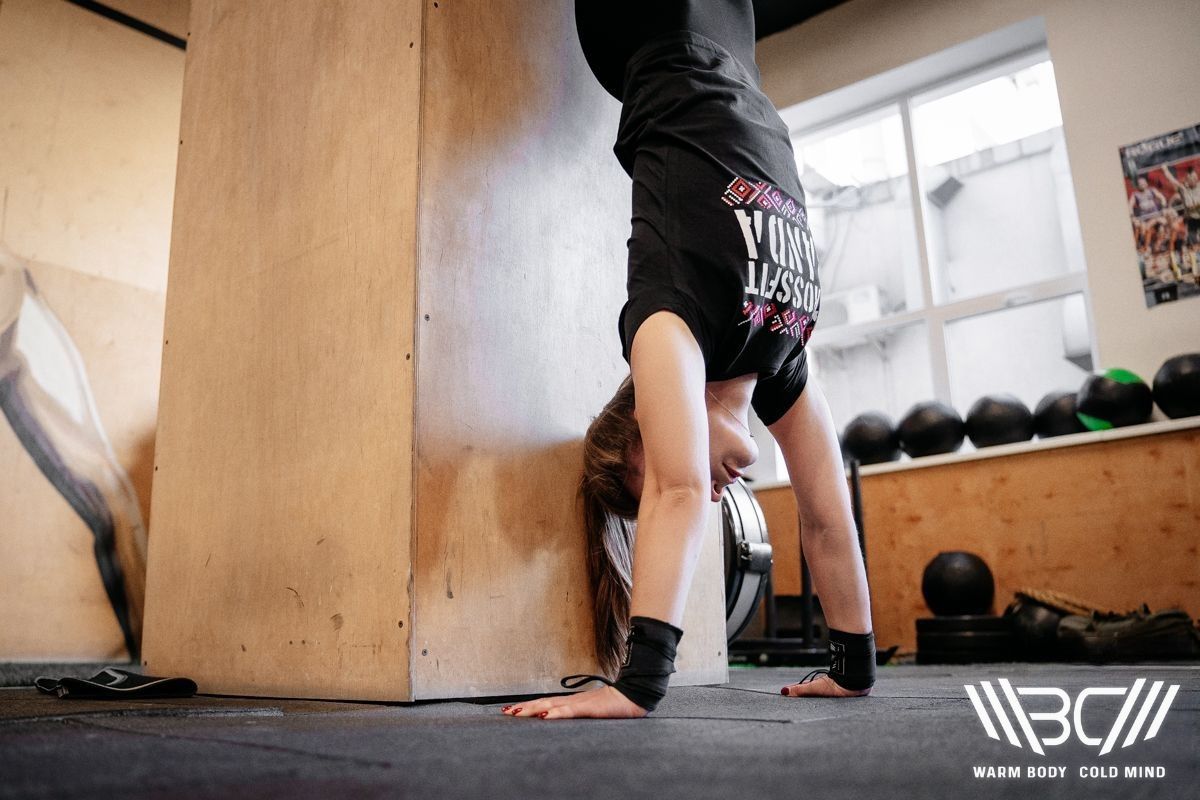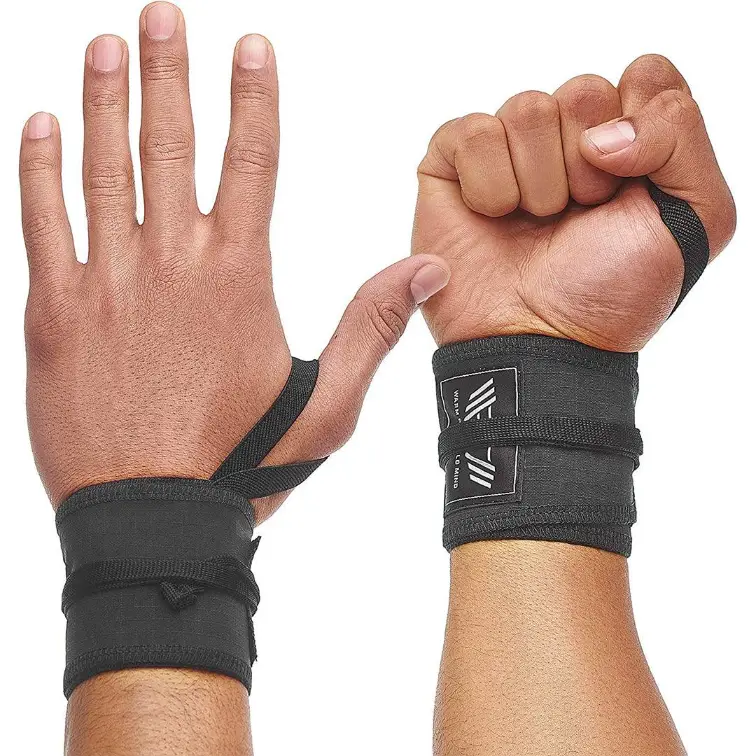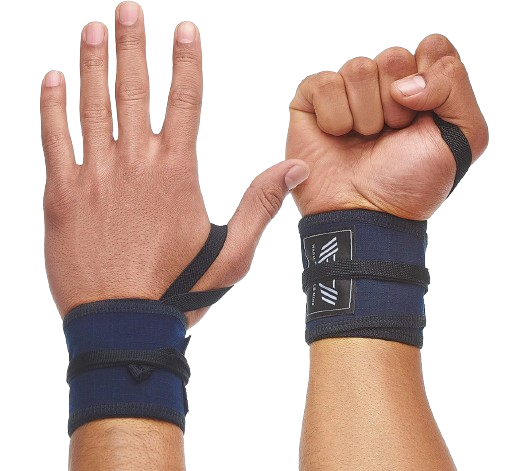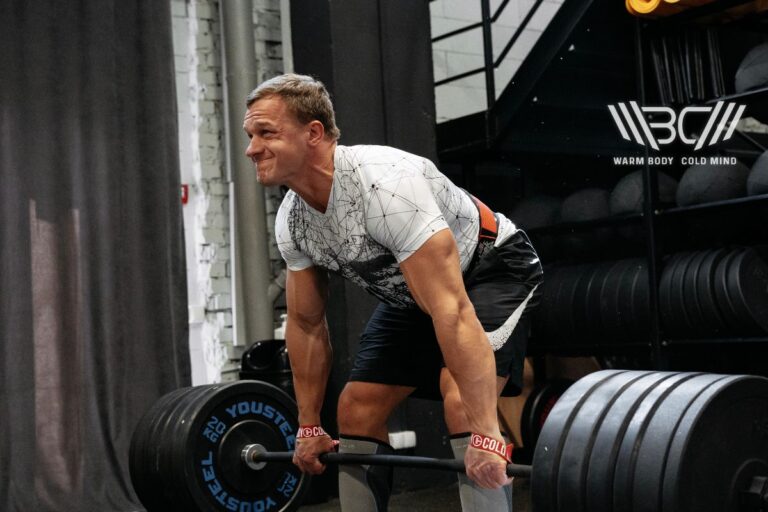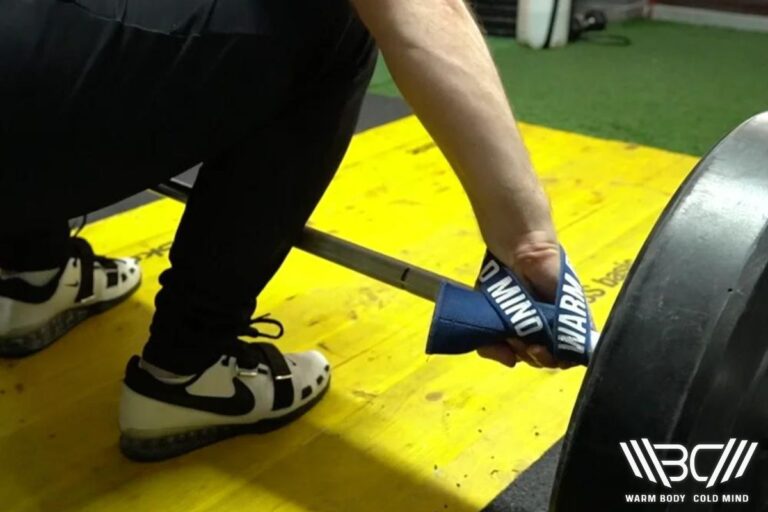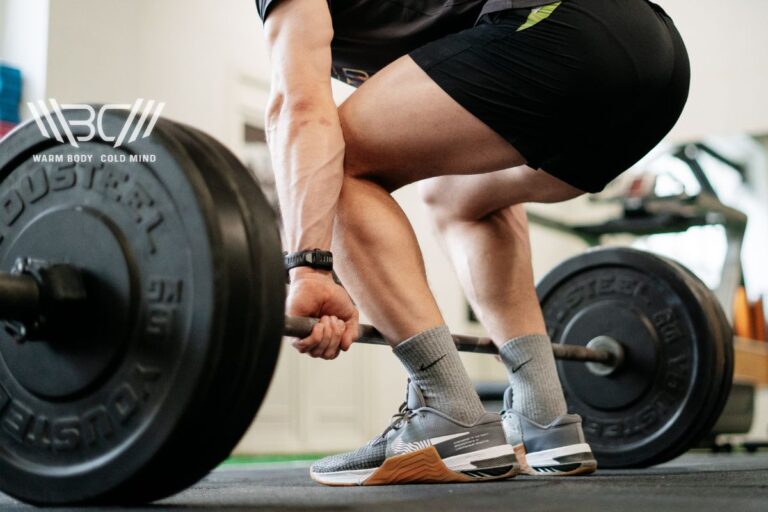Handstand Wrist Pain: Reasons & Solutions
MEDICAL WARNING: This article is for informational purposes only and is not intended to be a substitute for professional medical advice. If you experience any health problems while exercising or using supplements, consult your doctor.
For a lot of athletes, handstands are a required exercise they should be doing – that’s valid for gymnasts, functional fitness athletes, and even acrobats. However, anyone who has tried to hold a handstand, even for just a few seconds, knows how much pressure it puts on the wrist joints and how painful it can be if you lack mobility or have suffered previous injuries.
So, in this article, we’re going to take a deep dive into why handstand wrist pain occurs and what you can do to prevent it and avoid possible injuries. We’re also going to suggest some accessories and measures you can take to ease the pain you’re already suffering from it.
Why Handstand Wrist Pain Occurs – Wrist injuries and pain occur due to poor mobility in the area of lack of strength. Along with that, another reason why pain may occur are lack of proper form when performing some exercises, which can lead to overexerting the wrists and causing damage.
Main Causes of Wrist Pain During Handstands
Wrists, similar to the shoulders and knees, are one of the most injury-prone areas of our bodies, regardless of whether we actively train or not. However, we do have to mention that the more you train and utilize any of these joints, the more likely you are to get an injury, especially if you’re not taking the right measures to prevent it from occurring in the first place.
In the paragraphs below, we’re going to take a look at the most common reasons for handstand wrist pain, which athletes it typically affects, and what you can do to avoid pain and injuries during handstands and other exercises.
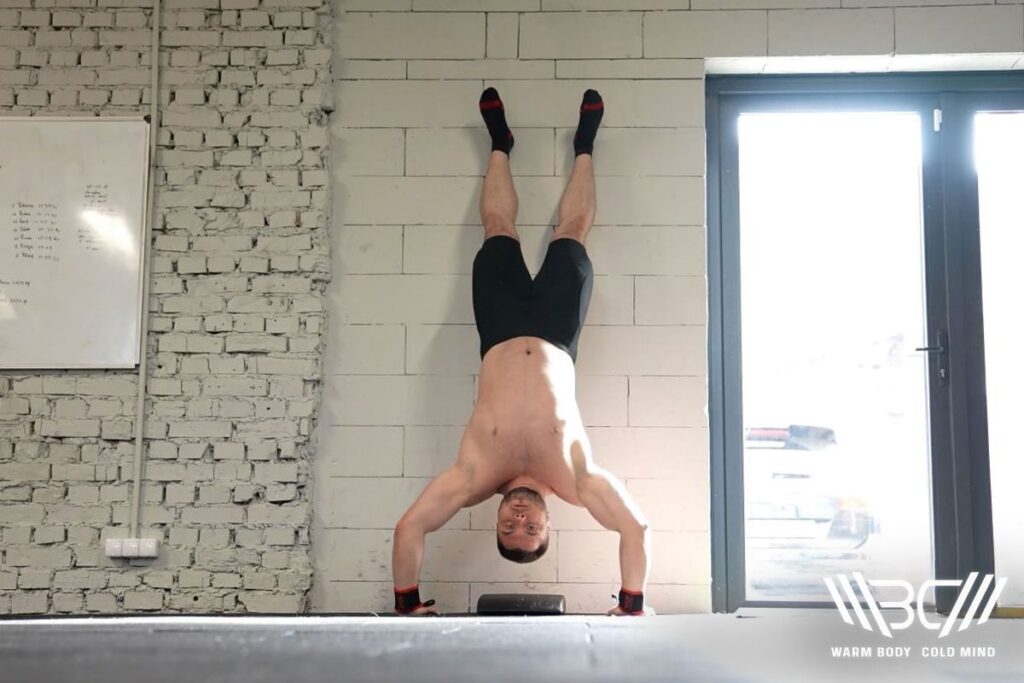
1. Lack of Mobility in the Area
When you perform a handstand, your wrists bend at a 90-degree angle, which can feel uncomfortable for some. The first thing you should test here is whether you can extend and flex your wrist through a decent range of motion without excess force – if you’re unable to, you also shouldn’t be loading it with weight.
If you attempt to hold your entire body weight at a 90-degree angle when your wrists already find it hard to reach that position, you’re essentially forcing your joint to perform a movement it’s not ready for, and that can quickly lead to an injury – a tendon or a ligament one, which are painful and take time to heal.
Fortunately, having this kind of issue is good news to an extent because you can always work to improve your mobility – there are various specific exercises and routines designed to help you move better, and that will, over time, increase the mobility in the joint, so you can comfortably bend at a 90-degree angle and perform handstands to your heart’s desire.

Cotton Weightlifting Wrist Wraps
Discover unparalleled wrist support with Warm Body Cold Mind cotton wrist wraps.
2. Not Warming Up
Warming up is a must-do before any exercise – that’s a phrase we all have heard before and that, unfortunately, noone actually listens to. Most people don’t pay enough attention to their joints when warming up, and the wrists particularly get neglected as people focus on their shoulders and knees.
However, if you want to avoid wrist pain handstand, and discomfort, you should ideally be doing around 3-5 warm-up drills for your wrists before heading into handstands. Online, you can find many example warm-ups that last for around 5-10 minutes, which should become a staple in your exercise routine.
3. Doing Too Much
Most people think that the more they do something, the better they will become and the faster it will happen. While that’s true to a certain extent, the reality is that if you’re spending too much time on your hands too soon, before your ligaments, joints, and muscles have been able to adapt to the movement, you’re causing too much stress, and that can lead to pain and potential injuries.
Typically, the muscles adapt the fastest, followed by the ligaments and tendons, which usually take longer, which is why you should build up your handstand time gradually.
Subscribe!
The latest reviews of must-have home gym training equipment, apparel, and supplements that will enhance your performance and bring you new results.
Which Athletes Typically Deal with Handstand Pain?
Typically, the athletes who suffer most from handstand pain are functional fitness competitors and yoga practitioners. That’s because they usually haven’t been training for years and years, and the movement is new to them, so naturally, it requires a longer adaptation period, and it may cause discomfort.
Additionally, these athletes tend to go from 0 to 100 – meaning they go from having never done handstands to doing them daily for several minutes a day without giving their bodies proper time to adapt.
Tips for Training with Existing Pain During Handstands
Of course, the best course of action would be to figure out why you’re getting injuries or simply pain when performing handstands and figure out a way to strengthen the area so that the discomfort disappears. However, if you must train while still experiencing pain, there are some tips you could follow that will make your sessions safer, more productive, and less likely to cause a long-term injury to a ligament or a tendon.
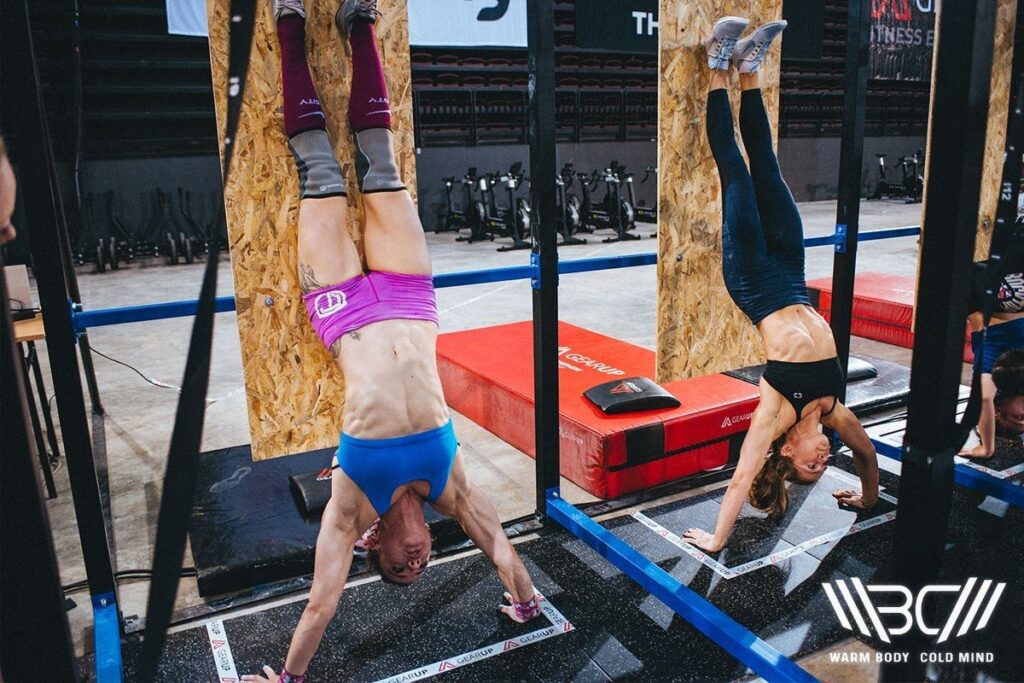
1. Work On Your Technique
After lack of mobility, the biggest reason why people deal with wrist pain when they do handstands is the lack of proper technique. When you’re feeling pain and you can’t do much, then it’s a good time to work on your form. In most cases, when you sink into your shoulder, and your scapula loses elevation, your shoulders will go forward.
This movement makes the angle even harder for your wrists and puts more pressure on them – in time; the pressure becomes inflammation that turns into pain and injuries. So, try to break out of that habit – focus on elevating your scapula; when you begin to sink in, get out of the handstand, rest, and begin again – try doing that for some time to build strength along with proper form.
2. Slowly Built Time Under Tension
This might seem completely logical to you, but apparently, it’s not to everyone – your hands and wrists aren’t biologically developed so that you can stand on them. And so, when you try to do it, you should go slow and give your body time to adapt.
Start with 2-3 sessions per week of around 10 minutes and build from there while considering how you feel throughout the entire process and whether your ligaments and muscles are getting more adjusted to the exercise.
3. Keep the Muscles Loose
Stretch, massage, and even ice, if needed. Do whatever makes you feel good and helps your body recover faster. You have to keep in mind that sore muscles are tight ones that are pulling on your joints – so if your forearms are tight, that leads to less mobility in the wrists and more pain. The same applies to your shoulders – if they’re tight and sore, your wrists will pay the price for all those handstands.
Not to mention that sore muscles are, in a way, slightly inflamed, as that’s a natural response to training. While that’s an effect we want, it’s not one that we should be training with, as pushing on when our bodies are signaling we need a rest is not always the brightest idea.
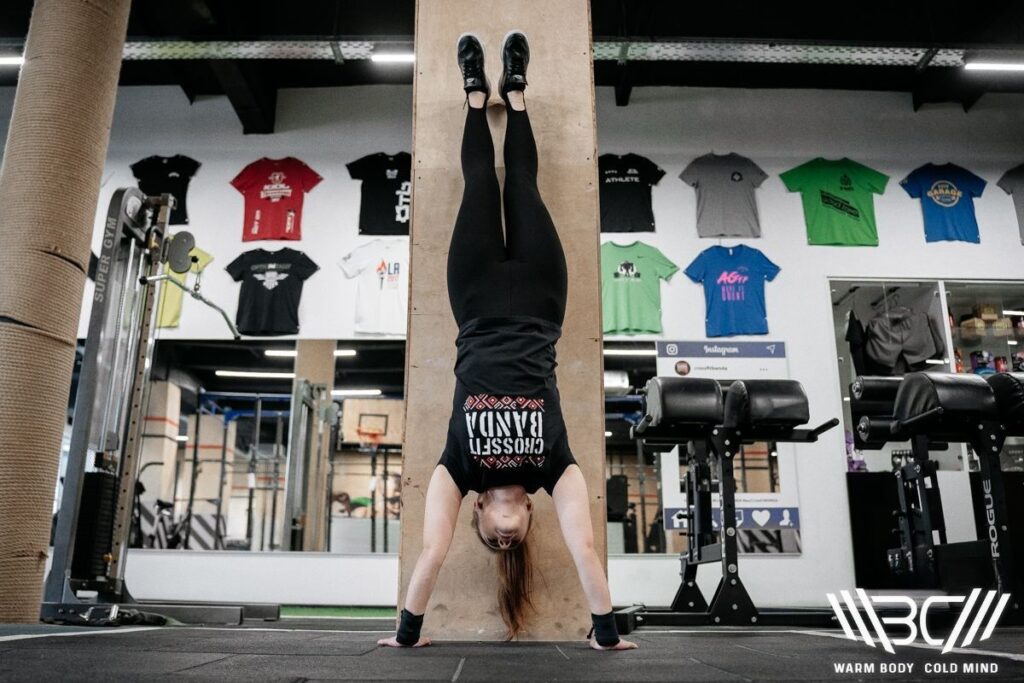
How to Avoid Wrist Pain During or After a Handstand?
Now that we’ve gone through general training tips let’s take a look at some more practical ones that will help you avoid pain during your handstand training sessions.
1. Work on Strength and Range of Motion
Before doing handstands, you should first consider how to strengthen wrists for handstands – typically, that includes training the forearms, shoulder, and upper back as well. That will help you get stronger over time and will make the movement that much easier to do, allowing you to practice proper form and alleviate some of the pressure from your wrists.
Additionally, you have to work on the range of motion – the more mobile your wrists are and the loser the muscles surrounding them are, the lesser the chance of having a serious injury
2. Wear Protective Gear
If you’re already dealing with wrist pain from handstands, it’s a good idea to protect the area with wrist bands or with kinesio tape, depending on the injury. Typically, if there’s an issue going on, your physio will tape it up, and you can wear wrist bands for additional pressure and support so that your ligaments, joints, and tendons feel the added comfort during the movement.
It’s vital to keep in mind that if you’re feeling sharp pain that makes you unable to flex or extend the wrist, you should immediately stop and rest the area – if you keep on adding more pressure to a spot that’s so sore, you will surely get yourself injured.
Our Recommendations for Wrist Bands
If you decide to invest in fitness equipment that will make your life easier, you should also buy the kind that is high-quality, tested by athletes, reliable, and long-lasting. That’s exactly what you will find in the types of wrist wraps we will be recommending.
Warm Body Cold Mind Cotton Weightlifting Wraps
Our Warm Body Cold Mind cotton wrist wraps allow you to train at your very best while making sure your wrists are supported and comfortable. Made out of 100% cotton, these wraps will not irritate the skin on your wrists and will also last you through many workouts.
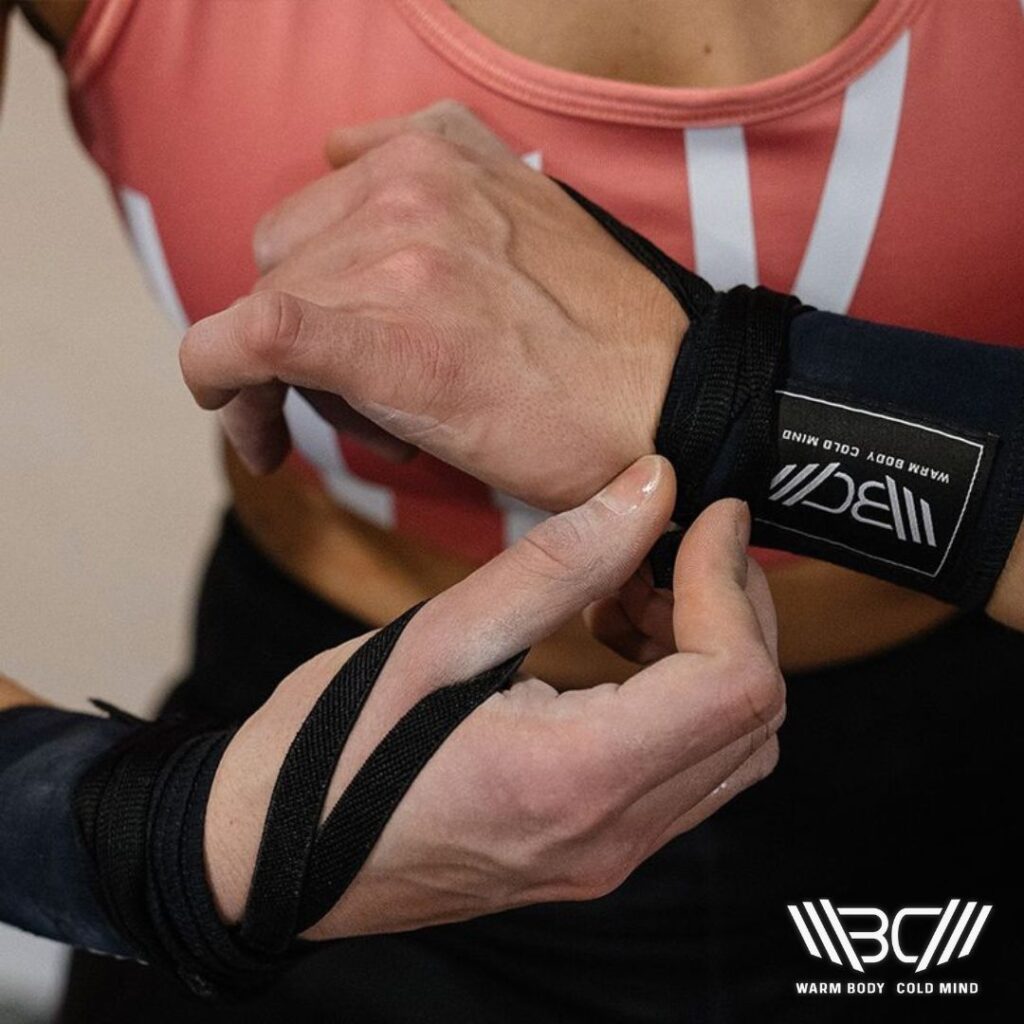
One of the main advantages of using wraps, instead of regular bands, is that you can regulate how loose or tight you want them to fit, depending on how much support you need.
FAQ
How Do I Stop My Wrist From Hurting When I Do a Handstand?
You can prevent wrist pain by making sure to work on your range of motion and the strength of the muscles surrounding your wrists. Additionally, you can help by wearing supportive gear (such as wrist wraps or bands) and giving yourself proper recovery time so that your muscles, tendons, and ligaments adapt to the movement.
How Long Until Handstand Practice Stops Hurting My Wrists?
This depends on you and your body; it’s also related to why you feel the pain. If everything is okay and you have the needed strength in mobility, about 2-4 weeks of practicing, you should be able to handstand comfortably without feeling too much pain and stress in the area. However, if you’ve had common handstand injuries or you lack proper mobility, the time to adjust might be longer.
How Often Should I Practice Handstands?
As a beginner, you should practice no more than 3 times a week for around 10-15 minutes maximum. Anything longer than that might end up hurting your wrists and causing damage to the area. As you progress, however, you can either add one additional session or just make those three a bit longer, depending on what feels comfortable for you.
Conclusion
Feeling a little bit of pain or discomfort when you first start to practice handstands is normal, and it typically takes a bit of time for your joints and muscles to get used to the movement. However, in order to prevent injuries, minimize pain, and optimize your training, you can work on improving the range of motion and strength in the area while also using supportive accessories to help you protect it during workouts.
With that said, if you’re feeling sharp pain, you should avoid practicing and consult with your health professional to ensure you’re not damaging the area further. As always, please let us know in the comments below – what has helped you avoid wrist pain during handstands, or ask us any questions that you might have.
References:
- Eschweiler, J., Li, J., Quack, V., Rath, B., Baroncini, A., Hildebrand, F., & Migliorini, F. (2022, January 27). Anatomy, biomechanics, and loads of the wrist joint. Life (Basel, Switzerland). https://www.ncbi.nlm.nih.gov/pmc/articles/PMC8880601/
- Ferguson, R., Riley, N. D., Wijendra, A., Thurley, N., Carr, A. J., & BJF, D. (2019, November 14). Wrist pain: A systematic review of prevalence and risk factors– what is the role of occupation and activity? – BMC musculoskeletal disorders. BioMed Central. https://bmcmusculoskeletdisord.biomedcentral.com/articles/10.1186/s12891-019-2902-8
- JM;, F. A. T. (n.d.). Effects of warming-up on Physical Performance: A systematic review with meta-analysis. Journal of strength and conditioning research. https://pubmed.ncbi.nlm.nih.gov/19996770/
- Teaching novices the handstand: A practical approach of different sport … (n.d.). https://www.researchgate.net/publication/323475078_Teaching_novices_the_handstand_A_practical_approach_of_different_sport-specific_feedback_concepts_on_movement_learning Seo, N. J., Armstrong, T. J., Ashton-Miller, J. A., & Chaffin, D. B. (2008, October). Wrist strength is dependent on simultaneous power grip intensity. Ergonomics. https://www.ncbi.nlm.nih.gov/pmc/articles/PMC6755327/
Author: Sergii Putsov
PhD in Sport Science, Olympic weightlifting, Strength & Conditioning coach and fitness expert
Sergii Putsov is a professional weightlifter with over 20 years of experience and multiple national medals. He was a member of the National weightlifting team, competing in the 94 kg weight class. Sergii holds a master’s degree in Olympic & Professional Sport Training and a Ph.D. in Sport Science. After his athletic career, Sergii transitioned into coaching and is now responsible for designing training programs, writing blog articles, providing live commentary for international weightlifting competitions, and hosting sport and fitness seminars worldwide.

